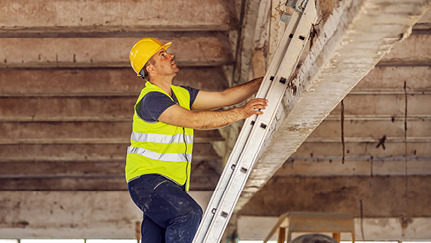To help prevent falls, keep this rule in mind whether climbing on ladders, equipment or vehicles.
Subscribe to our newsletter for timely content in your inbox

Climbing on ladders is a routine part of the job for many people. Yet workers often suffer injuries when they don’t ascend or descend properly.
Anyone who has ever suffered an injury by falling from a ladder, slipping off equipment or jumping out of a truck can tell you it doesn’t require much height to get hurt.
In fact, improper ladder use accounts for one out of every four injuries to people who use ladders, drive trucks or operate equipment as part of their normal job duties.
The three points of contact rule is simple. When climbing or descending ladders, trucks and equipment, always maintain contact with one hand and two feet, or two hands and one foot.
If you maintain three points of contact while you climb, you can limit your exposure to slips and falls.
When climbing a ladder, you must have both hands free and face the ladder. This allows for three points of contact with the ladder at all times and reduces the chances of falling.
Position the ladder so it is:
When using the ladder:
Before you lift a leg to climb or descend a vehicle or piece of equipment: